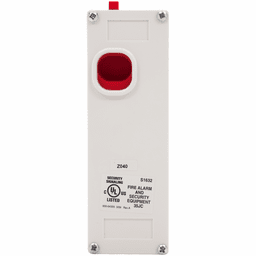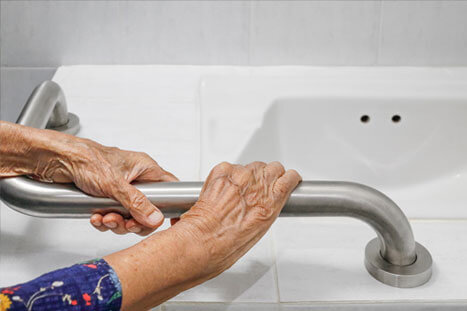
When training for a fight, there are many things to remember. Your conditioning is the key to success in the ring. Sprint intervals can be incorporated into your training program. Turn your treadmill to 5%, and then run 30 second sprints. Light jogging is then followed by 30 seconds. Repeat this workout for 10 minutes. Remember that fighting can be both slow and fast. The better your conditioning, the better you will weather the explosive action.
Conte's SNAC Dome training facility
The SNAC Dome, Conte's unique training facility, is a highlight. The bubble is approximately 18 feet wide and 12 feet tall. It pumps air with a 10% oxygen mix. Your body will produce red blood cells because of the artificially high level of air pressure. Those red blood cells carry oxygen throughout your body. Using a high-tech breathing machine is a popular training method that allows boxers to mimic the feel of being 20,000 feet above sea level. This allows boxers to perform resistance training and shadow box while also allowing them to practice mitts and shadow box.
The training method combines traditional exercises with hypoxic training, which lowers the amount of oxygen available for high-intensity workouts. This triggers the body’s adaptive mechanisms. During training, Conte's SNAC gymnasts engage in a variety simulated breathing exercises that mimic low oxygen levels. These exercises include heavy bag, battle ropes and running sprints on non-motorized treadmills. The custom harness and mask they use are connected to high-altitude simulators. This training is intended to help you become a stronger and more explosive fighter.
Korchemny's hypoxic training facility
Hypoxic chambers are used for various purposes by endurance athletes, such as training or competing. Their growth is expected to be moderate due to legal and convenience benefits. The technology may be useful in improving athletic performance. But athletes should make sure they choose the right chamber solution that suits their needs. This article examines the benefits and limitations of hypoxic chambers. The final decision is up to the athletes: choose the appropriate solution for your performance improvement.

Highly specialized equipment is used to create hypoxic training environment. You can have one or multiple chambers that are used by multiple people. Hypoxic training equipment is precision-engineered, so it can mimic altitude. Hypoxic Training also aids athletes to adapt to higher elevations. Hypoxic exercise can help athletes to improve their health and fitness.
Imi Lichtenfeld's Krav Maga self-defense classes
Imi Lichtenfeld, an Israeli legend and fighter, created the krav maga self defense techniques in the 1950s. Lightenfeld's knowledge of fighting and self-defense techniques were recognized and he was placed in charge of training the Jewish Defense Leagues. He taught the groups in unconventional warfare tactics known as kapap. Kapap stands for face–to-face combat. Lichtenfeld established the Israeli Krav Maga Association after he retired from the IDF. His knowledge and techniques are now available to the entire world.
Lichtenfeld, a Hungarian-born and raised in Bratislava was an exceptional person. His father had boxing and wrestling skills and became a police detective who was renowned for his arrests. Lichtenfeld was both a self-defense instructor as well as an educator. He combined sport combat and self-defense. Imi's father was also a trained ballet dancer and starred in a stage production of "Mephisto."
Taekwondo athletes taper their training before a fight
The volume of training should decrease by 40 to 50% in the week before a fight. Next, reduce volume by 70-80% for seven to ten more days before the fight. The taper allows athletes to recover faster from training camp and maximize their aerobic strength. Also, the fighter should cut down on his training volume by the end of training camp.

Fighters should work on technical skills for a week prior to their fight. This includes shadowboxing, mitts, hitting the heavy bag, and mitts. The two last days of training should be focused on injury prevention and light weight. The fighter should practice foam rolling to reduce pain and knots. They also need to do static and dynamic warm-ups. The goal is to be sharp and fresh for the fight, but also to prepare their bodies for the stress of a grueling competition.
FAQ
What are the best foods to avoid when trying weight loss?
Avoid trans fats. Trans fats can raise LDL (the unhealthy) cholesterol levels while lowering HDL levels (the good).
Trans fats are commonly found in fast food, deep-fried and packaged baked goods as well snack cakes and other processed foods.
These unhealthy fats can also lead to inflammation, which can cause heart disease and diabetes.
Avoid foods containing artificial sweeteners. Artificial sweeteners can increase your risk of developing cancer.
These chemicals are found everywhere, from soft drinks to chewing candy to candy bars to chewing gum. They also appear in meat, poultry and eggs.
Artificial sweeteners include saccharin, cyclamate, sorbitol, aspartame, acesulfame-K, and sucralose.
The American Heart Association recommends avoiding these chemicals because they may damage DNA in cells.
Is it true that overeating protein causes kidney stones?
Protein helps to maintain healthy bones, tissue, and skin. Too much protein can cause calcium to be excreted through the urine. This can cause kidney stones.
It is important that you note that not all people develop kidney stones when they consume more than 2 grams of protein per kg (2.2 pounds). It is possible to eat high levels of protein without developing kidney stones.
By being careful with your sodium intake, you can prevent kidney stones. Sodium regulates the body's water balance. A high level of sodium can increase the risk of developing kidney stone.
You can also reduce your intake of proteins if you develop kidney stones. Protein provides about half of the daily caloric needs for most adults. It is possible to lose weight by cutting down on your intake of proteins.
If you do decide to eat more protein, don't go overboard. Limit your intake to 20% of your total daily protein intake.
What dietary supplement is best for weight loss?
Losing weight requires both diet and exercise. However, some people find that certain supplements help them along the way.
Studies have shown that omega-3 fatty acid may be beneficial in weight loss. Omega-3 fatty acids are essential fats that are vital for brain function, cell membrane integrity, and other functions. They can be found as a part of seafood such as tuna, salmon, shrimp, and cod live oil.
Other research suggests that green tea might be beneficial for weight loss. Green tea has catechins, which are antioxidants that can help increase metabolic rate and encourage weight reduction.
Statistics
- An estimated calorie range for moderately active adult males falls between 2,200 to 2,800 calories per day, depending on age. (eatright.org)
- According to the American Academy of Dermatology (AAD), men over 50 are at a heightened risk of developing it. (healthline.com)
- The PRS enabled risk stratification for overall prostate cancer and lethal disease with a four-fold difference between men in the highest and lowest quartiles (HR, 4.32; 95% confidence interval [CI], 3.16-5.89). (pubmed.ncbi.nlm.nih.gov)
- Get free shipping and 25% off today. (healthline.com)
- According to the American Heart Association, blood pressure should be checked at least once every two years, beginning at age 20. (my.clevelandclinic.org)
External Links
How To
How can I burn fat while exercising?
Exercise burns calories through increased metabolism and oxygen consumption.
At moderate intensity, you will lose weight easily.
These tips will help you burn fat and keep fit while exercising.
-
Do cardio exercises such as walking, swimming, jogging, cycling, running, or elliptical training.
-
Three times per week, exercise for 30 minutes.
-
Strength training is a great way to lose weight.
-
Avoid intense exercise. It's possible to build muscle, but not lose it.
-
Hydrate well during exercise. Water helps to flush out toxins from the body and maintains proper hydration.
-
Choose low-fat protein shakes after working out. Protein shakes help repair muscles and boosts energy.
-
You can eat smaller meals throughout the day so that you don't feel hungry in between meals.
-
Don't skip breakfast! Skipping breakfast can make you tired and sluggish.
-
Take care of your mental health. Stressful situations can slow metabolism.
-
Keep a positive attitude. Studies show that people who believe they are overweight gain more weight then those who think they are attractive.
-
Sleep enough. You will have a harder time losing weight if you do not get enough sleep.
-
Be active. Keep moving every hour.
-
Maintain a healthy diet. Healthy eating will keep you fuller and more satisfied for longer.
-
Find ways to relax. A tense mind doesn't allow your body to release stress hormones that break down muscle tissue.
A balanced diet will provide all nutrients that are necessary for growth.
You should eat six small meals per day rather than three large ones. This allows your body time to digest what you've eaten.
You need about 500 milligrams of calcium daily to maintain strong bones. Calcium can be found in dairy products such as yogurt, fortified soybean beverages, orange juice, cereals, bread, and cereals.
Calcium comes from leafy green vegetables, beans, tofu, nuts, seeds, and cheese.
Vitamin D is necessary for the body to absorb calcium. Vitamin D can be found in egg yolk, fatty fish, and other fortified foods.
Vitamin E plays an important role in skin health. Vitamin E can also be found in vegetable oil, wheat germ oils, peanuts as well almonds, sunflower seeds and corn.
Your body requires zinc to function normally and for wound healing. Zinc is found in seafood, oysters legumes meats, whole grains, whole grains and meats.
Zinc deficiencies can lead to fatigue, decreased appetite, depression, and reduced immunity.
Sugar intake can lead to insulin resistance which causes blood glucose levels to rise. Insulin resistance causes weight gain.
Insulin resistance occurs when the bloodstream is full of free radicals. Free radicals are molecules with unpaired electrons that damage cell membranes and other parts of the body.
Food additives, pesticides and herbicides, as well as preservatives, smoking and radiation are all sources of free radicals.
Free radicals can lead to cancer and heart disease, diabetes mellitus, arthritis, asthma, and premature aging.
Antioxidants are essential for preventing free radical damage. Antioxidants protect against oxidative damage.
Antioxidant vitamins include Vitamin C (found in citrus fruits), beta carotene (found in carrots, sweet potatoes, spinach, broccoli, cantaloupe, apricots, squash, mangoes, peaches, peppers, tomatoes, cabbage, cauliflower, kale, Brussels sprouts, collard greens, watermelon, and strawberries), and Vitamin E (found in nuts, olive oil, avocados, and eggs).
Additional antioxidant nutrients include selenium and copper, manganese and zinc.
Selenium helps protect cells from oxidative damage caused by free radicals. Selenium may be found in Brazil nuts as well tuna, liver and kidneys. It can also be found on shrimp, cod, turkey, beef lamb, pork, chicken, and other foods.
Copper protects your eyes, brain, eyes and red blood cell. Copper is found in shellfishes, poultry, meat, organ meats, and other foods.
Manganese is essential for bone structure. Manganese can also be found in oatmeal, brown rice, spinach and bananas.
Zinc helps with normal growth, reproduction, as well as wound healing. Zn is found in lean cuts of meat, white fish, poultry, and eggs.